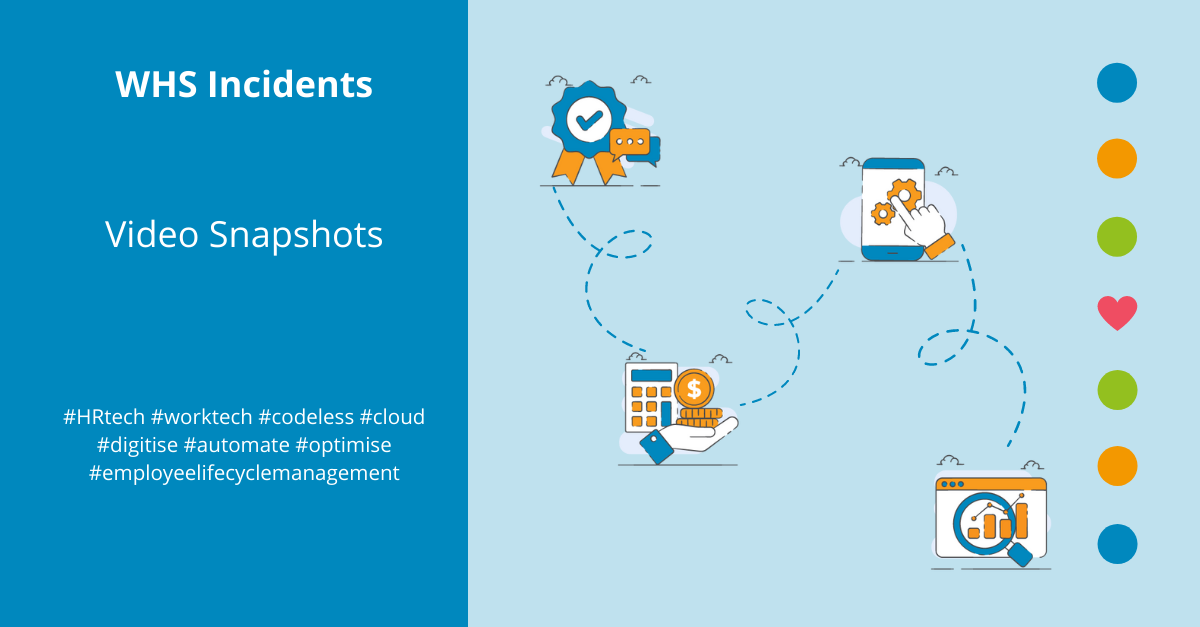According to Safe Work Australia, there were 114,435 serious claims made in 2018-19 at a median cost of $11,700. No one wants employees to get injured, but if you consider those figures, and then factor in the legal ramifications if you don't have accurate record keeping and audit trails when accidents happen, the impact on your organisation becomes exponential. In this week's HR Blog we look at the important of managing WHS incidents well, and the risks of getting it wrong.
WHS Incidents Are A Major Risk Factor
We all know that workplace health and safety is of critical importance, and most employees understand that ensuring a safe workplace is a collective effort. However, that knowledge doesn't stop incidents from happening. No employer wants workplace injuries to occur, but when they do, they result in two channels of potential liability. One related to the injury itself and the other related to the way the injury was reported and managed. Once an injury has happened, it can't be undone, but from that point forward, your business can (and must) have rigorous WHS incident management in place to ensure that your compliance risks are mitigated.
If you look at the most recently published workers' compensation metrics on the Australian Institute of Health and Welfare, the numbers are disturbing. Despite the fact that the number of annual injuries in Australia are reducing, the cost of injuries, not just to individuals in terms of their health and wellbeing, but also to the business, is significant and will continue to increase.
For example, in 2017–18, $1.8 billion was spent through workers’ compensation agencies for work-related injuries and diseases (AIHW 2019). This was an increase of 3.7% since 2016–17, which was higher than the average annual growth rate over the decade of 1.3%.
In 2016–17, a median time of 5.3 weeks of work was lost for serious claims in the injury and musculoskeletal disorder group, and 10.2 weeks for diseases (Safe Work Australia 2020). Adjusting for changes in the price of labour (base year 2000–01), the median compensation paid in 2016–17 was $7,100.
We can't stop injuries from happening in your workplace, but as an HR Software Platform, we can most definitely help you manage the reporting and management of WHS incidents. That's why we've created a new WHS Incident Management Widget and Wizard, so that you can record, manage and audit all incidents reported within your organisation.

If your organisation needs a more efficient and effective way to manage and track WHS compliance, then watch the video below, it could transform the way you work!
Get Started Today With a No Obligation Free Trial
If you work for a mid-sized organisation in Australia or New Zealand, you can use Subscribe-HR's suite of 13 codeless, cloud HR software solutions to seamlessly manage every touchpoint of the employee journey, from the first hello, to the final goodbye.
Want to try it out? Get started right away using our 7-day FREE trial, which gives you no obligation access to the full functionality of the Subscribe-HR platform.
Get instant access to our out-of-the-box, templated functionality to get up and running quickly, then use our powerful and flexible configuration tools to adapt your unique, HR process into Subscribe-HR.
Use our simple, step-by-step wizards to set up your organisation, your job description and then submit your job requisition. This is the crucial first step in creating a flexible #HRspine that improves the flexibility, efficiency and effective management of employee information
You'll be amazed by how fast and easy it is to set yourself up.


